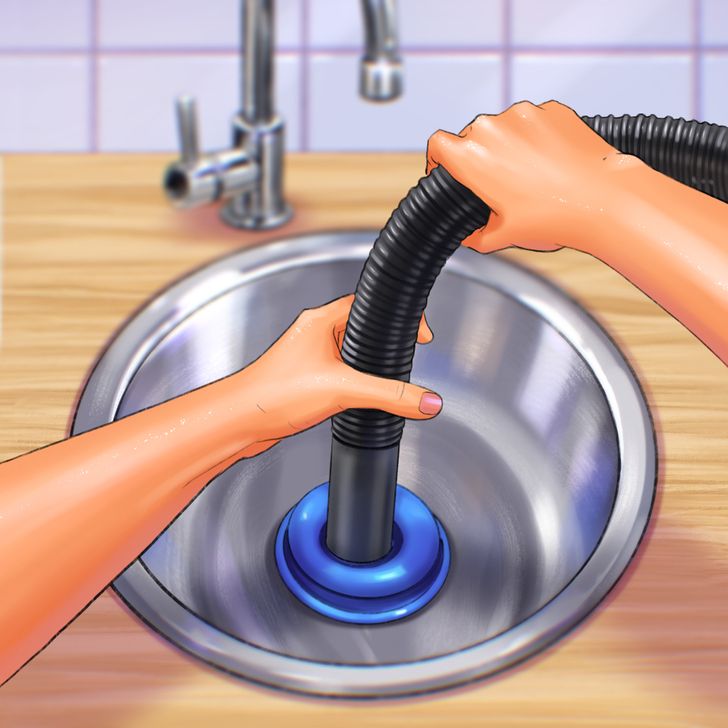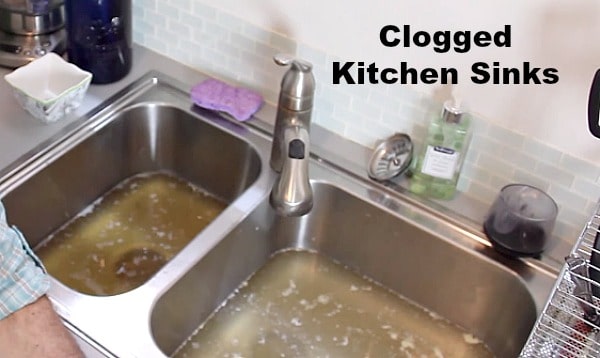Visit Link
The writer is making several good annotation regarding Common Household Plumbing Issues as a whole in this article in the next paragraphs.

In this short article, we will be considering 5 simple actions you can take to release your kitchen area sink from clogs and also save you from the discomfort and also shame of managing a stopped up kitchen sink.
Blocked kitchen area sinks are just one of the most typical water drainage problems property owners deal with. And also what's even more, it's a extremely awkward and undesirable sight. Envision mosting likely to the sink to do your recipes as well as figuring out that the drain is blocked and water can not stream down easily.
Many stopped up drains are triggered by food particles, fat, oil, and also soap fragments. They clog the sink and also make it hard for water to drop the drainpipe swiftly. While it is alluring to put a call through to the plumbing professionals, there are a couple of DIY hacks you could try first before making that telephone call.
1. Sodium Bicarbonate and Vinegar
Rather than making use of any type of form of chemicals or bleach, this method is more secure as well as not unsafe to you or your sink. Sodium bicarbonate and also vinegar are day-to-day house items made use of for several other things, as well as they can do the trick to your kitchen area sink.
Firstly, eliminate any water that is left in the sink with a cup.
Then pour a good quantity of baking soft drink away.
Pour in one cup of vinegar.
Seal the drain opening and also allow it to go for some mins.
Pour warm water down the tubes to disappear various other persistent deposit and also fragments.
Following this basic technique might do the trick, and also you can have your cooking area sink back. Repeat the procedure as much as you deem needed to free the sink of this debris entirely.
2. Attempt a Plunger
If the issue is not from the garbage disposal, you can try using a plunger. Plungers are common residence tools for this celebration, as well as they can come in convenient if you use them effectively. A flat-bottomed plunger is most ideal for this, however you can make do with what you have is a bathroom plunger.
Comply with the following straightforward steps to use the bettor efficiently:
Secure the drainpipe with a rag as well as load the sink with some warm water
Place the plunger ready over the drain and also begin diving
Check to see if the water runs freely after a few plunges
Repeat the process up until the drainage is cost-free
3. Possibly it's the Garbage Disposal
In several cases, the clog might be due to a blockage in the disposal. Usage pliers instead.
If this does not function, you can discover the following choice to unblock your cooking area sink.
4. Use a Hanger
Using a wire cloth hanger or a plumber's snake if you have one can do the trick. All you need do is align the hanger to go down the drain while you carefully pick out the particles causing the blockage.
Run warm water away hereafter to see how effective you were.
5. Use Boiling Water
When faced with a blocked sink, the first thing you must try is to pour boiling water down the drainpipe. That has to do with one of the most simple solution to clogged up sinks and drains. Boiling water assists neutralize the particles and debris triggering the obstruction, especially if it's soap, grease, or oil fragments, as well as in most cases, it can flush it all down, as well as your sink will certainly be back to normal.
Do not attempt this approach if you have plastic pipes (PVC) because warm water might thaw the lines and also trigger more damage. You might desire to stick to using a bettor to get debris out if you make use of plastic pipes.
Utilizing this method, activate the faucet to see just how water streams after putting hot water away. If the obstruction lingers, try the procedure once again. Nevertheless, the obstruction could be a lot more persistent sometimes as well as call for more than just boiling water.
Final Words
Attempting these few tricks might conserve you the expenses of having a plumber check it. But in most cases, a plumber is what we need. In cases where you discover it tough to unclog the sink even after attempting all these approaches, it might be time to leave it to the specialists.
Get in touch with professional plumbing firms to fix your drainage issues and also various other various family plumbing needs.
Clogged kitchen area sinks are one of the most common water drainage issues house owners encounter. Imagine going to the sink to do your recipes and finding out that the drain is obstructed as well as water can not flow down easily.
They block the sink as well as make it hard for water to go down the drainpipe quickly. When faced with a clogged sink, the initial thing you need to attempt is to put boiling water down the drain. Boiling water assists counteract the particles and also debris causing the clog, especially if it's oil, oil, or soap bits, as well as in many cases, it can purge it all down, and your sink will certainly be back to typical.
How to Unclog a Kitchen Sink
Take the Plunge
Start your efforts by plunging. Use a plunger with a large rubber bell and a sturdy handle. Before getting to work on the drain, clamp the drain line to the dishwasher. If you don t close the line, plunging could force dirty water into the dishwasher.
Fill the sink with several inches of water. This ensures a good seal over the drain.
If you have a double sink, plug the other drain with a wet rag or strainer.
Insert the plunger at an angle, making sure water, not air, fills the bell.
Plunge forcefully several times. Pop off the plunger.
Repeat plunging and popping several times until the water drains.Clean the Trap
The P-trap is the curved pipe under the sink. The trap arm is the straight pipe that attaches to the P-trap and runs to the drain stub-out on the wall. Grease and debris can block this section of pipe. Here s how to unclog a kitchen sink by cleaning out the trap:
Remove as much standing water from the sink as possible.
Place a bucket under the pipe to catch the water as it drains.
Unscrew the slip nuts at both ends of the P-trap. Use slip-joint pliers and work carefully to avoid damaging the pipes or fasteners.
If you find a clog, remove it. Reassemble the trap.
If the P-trap isn t clogged, remove the trap arm and look for clogs there. Run the tip of a screwdriver into the drain stub-out to fetch nearby gunk.Spin the Auger
With the trap disassembled, you re ready to crank the auger down the drain line.
Pull a 12-inch length of cable from the auger and tighten the setscrew.
Insert the auger into the drain line, easing it into the pipe.
Feed the cable into the line until you feel an obstruction. Pull out more cable if you need to.
If you come to a clog, crank and push the cable until you feel it break through. The cable will lose tension when this happens.
Crank counterclockwise to pull out the cable, catching the grime and debris with a rag as the cable retracts.

We were guided to that editorial about Do It Yourself Plumbing Solutions from a friend on a different site. You should take a moment to share this entry if you enjoyed it. We love reading our article about Common Household Plumbing Issues.
Expertise on line!